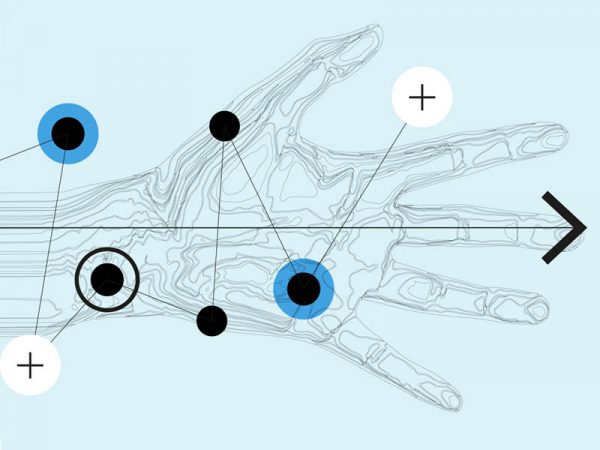What Is Branding In Marketing?

Branding is the process through which a business presents itself and seeks to position itself in an industry or market. It creates a strong, positive perception of a company, its product offering and services in the customer’s mind by combining elements that make up an identity. This identify system is headed by a name, logo and strapline that set the tone for a visual language and linguistic tone of voice that is consistently applied across the marketing mix.
Good brand strategy and design runs through every aspect of marketing and consistency is key as it is applied across customer facing touchpoints including advertising, corporate websites, social media platforms and customer services.
Consistency must then be managed carefully on an ongoing basis across both online and offline channels. In a Zendesk survey, 87% of consumers said that consistent branding across all online and traditional platforms was vital to engaging and retaining a customer base.
Effective brand strategy and design will take into account the different contextual requirements of online and offline channels. In traditional in-store retail situations, the positioning and display format will affect how a customer perceives a branded proposition – there is great potential to dial up three dimensional and sensorial aspects. Online and across digital channels, storytelling is increasingly used to deepen the experience, with messages presented to the consumer at timely and context relevant moments. There must be consistent elements that connect this ‘omnichannel’ presence however.
Building a Brand
Building a brand is about more than creating a cool logo or some slick copy - to engage the people who matter, it is important to understand how they perceive their need, the market and your brand, product and service offering within it. Whether starting from scratch or looking to refine an existing proposition, it is important to consider;
1. Be Clear About What You Stand For
Knowing what you want the purpose of your business is and what it seeks to represent are the building blocks of any brand. You can’t be (and shouldn’t try to be) everything to everyone, especially when you are just starting. It’s important to find your field of focus and build around that. By envisioning what you want your company to be – and what it should mean to people - you can start planning to make it a reality.
2. Know Your Audience
According to Fundera, 89% of shoppers stay loyal to brands that share their values. It is crucial to find out what motivates your customer and ensure that you are creating assets and presenting messages that make sense and that are relevant and meaningful to them. It’s just as important to know how to avoid undermining your communications with elements that contradict or cut across unspoken values.
This will not only help you identify ways of connecting with your audience but also provide a means by which you can assess the efforts of competitors and adjust brand positioning to be more distinctive.
3. Be Consistent
Managing brand strategy and design execution carefully across your business helps to ensure optimum performance and makes the brand story clear and consistent. A brand story articulates what makes your business different and provides evidence of credibility and value. It sets the stage for every interaction that customers have with your brand, both in-store and online.
In Shopify’s research on what wins buyer and customer trust, they found out that buyers shopping on an online store for the first time often look for a business’s mission and purpose to see if they have a relevant story and one that matches their own perspective.
The brand story keeps your audience reassured that yours is a good business to be associated with and buy into.
4. Listen Hard and Keep Refining
There is always room for improvement and any well managed brand should be constantly listening and watching its customers if it is to stay in tune with markets that are changing faster than ever before. Brand strategy should therefore always incorporate a degree of flexibility for design refinement. The ability to be agile as a brand can be incredibly powerful when informed by the kind of meaningful insight that can be derived from consumer research and analysis.
The Importance of Branding in Marketing
Branding benefits the marketing effort a business in numerous ways, some of the most important being;
1. Establishing a Company Within an Industry
The right brand identity can potentially help you get established within your industry. Online channels have made competition fierce in every sector and it is essential to be clear about why your business should be considered a better choice and bring that to life with a well-considered, coherent identity.
Great brand strategy helps you to design toolkits, assets and stories that build trust with your target audience. With trust the foundation for a longer-term relationship with customers, the aim over time is to keep delivering an experience that matches the promise and builds brand loyalty and advocacy.
2. Building Trust
Great brand strategy helps you to design toolkits, assets and stories that build trust with your target audience. With trust the foundation for a longer-term relationship with customers, the aim over time is to keep delivering an experience that matches the promise and builds brand loyalty and advocacy.
3. Increasing Awareness
Having a strong and recognizable brand will optimise the chance of attracting new customers. It takes just 10 seconds for people to form an opinion about a logo according to Crowdspring. We all recognise certain brands that have managed to build an iconic logo (the golden arches of McDonald’s) and attain high levels of awareness - even if we perceive the values of the brand and its relevance to our needs differently.
4. Pride in Association
A strong brand will play an instrumental role internally too. When employees are aligned to what a business stands for, engagement levels rise and productivity is boosted. Research by Lyfemarketing shows that having a great brand can boost employee pride and bring down hiring and training expenses by as much as 50%.
Starting Points
No business exists in a bubble and many operate in commercial spaces where the differences between competitors is relatively nuanced.
To be visible and understood by the end customer, it is essential to invest in building a clear brand strategy. Attracting and retaining their attention starts with;
A Clear Identity
Clarity is key. This doesn’t need to come in the form of a revolutionary idea – but rather a simple truth that exists for customers and which provides the basis of the way they make sense of a proposition. Brand designers can use this kind of insight to inform creative direction and develop solutions that are clear and compelling.
A Logical Logo
A logo is a succinct visual representation of your business proposition. It makes a critical first impression and sets the tone for what follows. It may look simple, but designing a logo is not an exercise that should be based on gut feel – in fact quite the opposite. With the world saturated with logos, we have all become adept at reading them and forming judgments based on what has gone before; cultural references and associations that influence our perceptions.
For example, In a recent survey by Customerthermometer, it was revealed that 13% of consumers would pay up to 50% more for a company’s products or services if they had the impression that it made a positive impact on the world. It makes sense to understand what is going to motivate a customer and then bring that to life with design that is logical rather than whimsical.
A Powerful Proposition
A value proposition is a coherent statement that explains why a business exists, how it does, what it does and what it delivers to the world. When articulated effectively, it will enable understanding and help to establish an emotional connection with internal and external stakeholders. Turning this into an ultra short form ‘elevator pitch’ is instrumental in defining a brand communication and design strategy that makes a powerful connection with people.
This article was first published in December 2021
Related
Features of a Great Branding Agency
There are a lot of factors to consider when choosing the right branding agency for your business. We share some thoughts on what to look for in getting the right fit.

